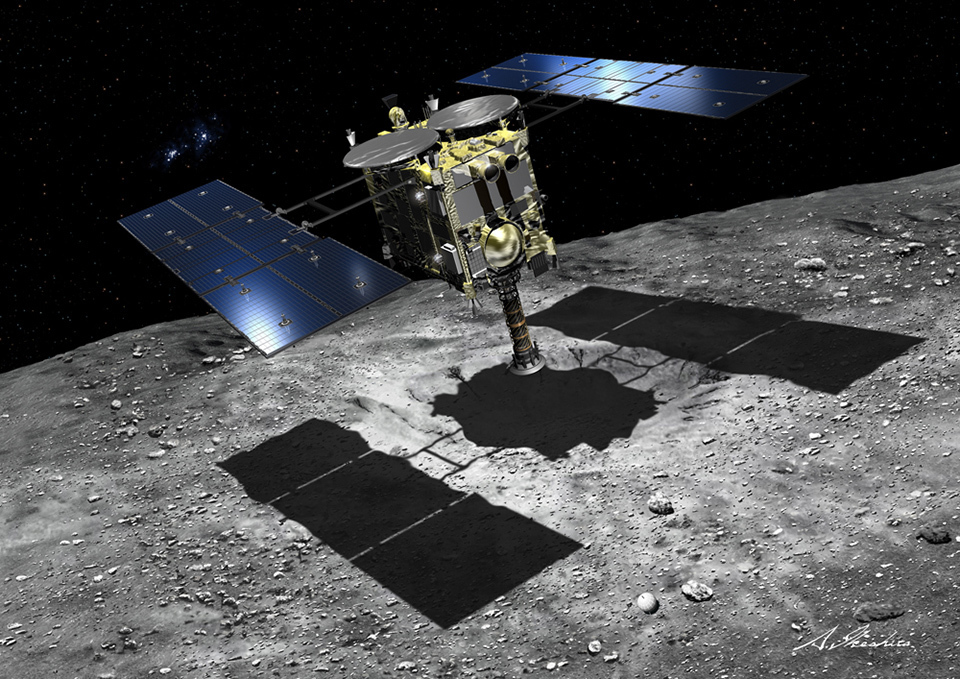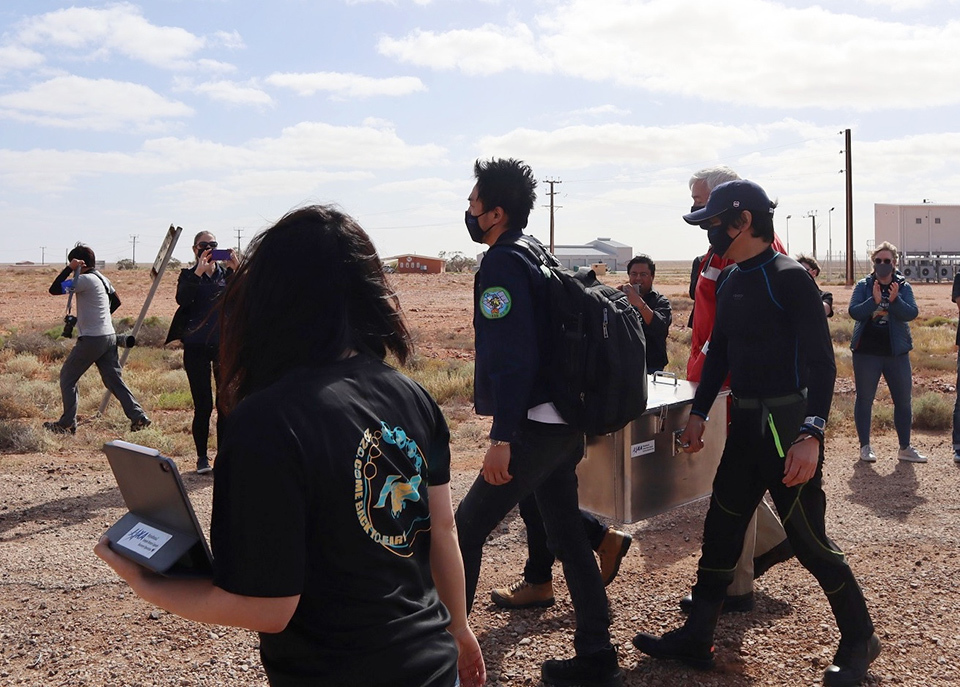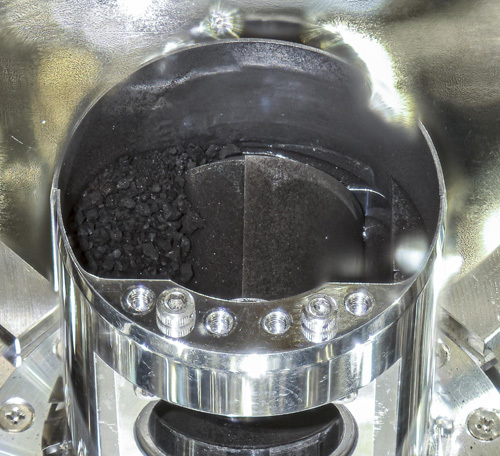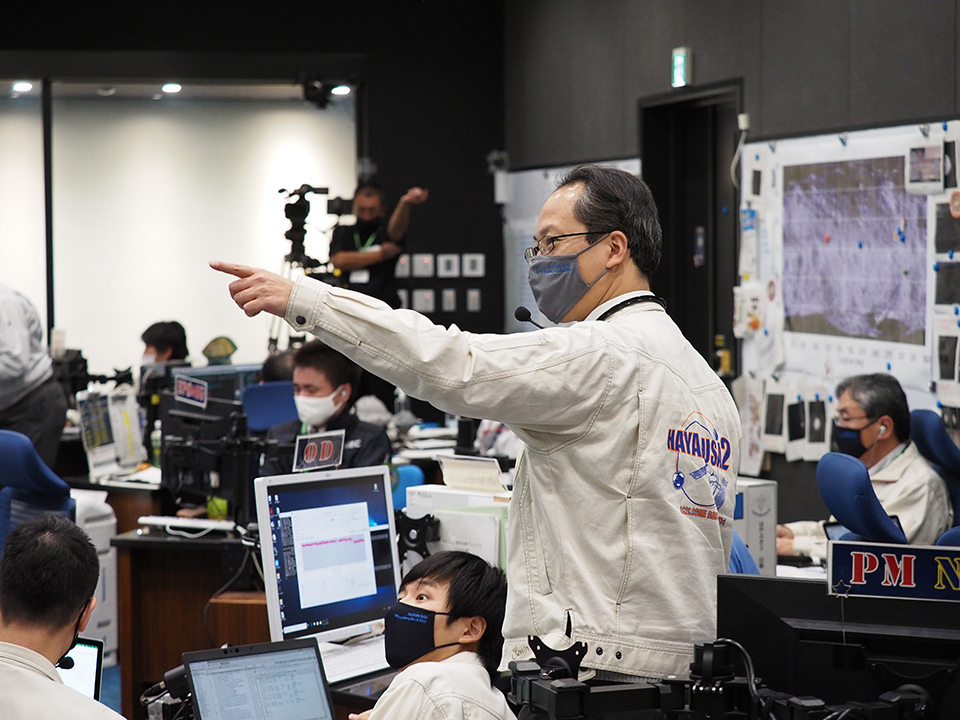A Japanese probe succeeded in bringing to Earth asteroid samples that scientists hope will provide a key to unlock the secrets behind the origin of life.

Hayabusa2 navigated for three and a half years through outer space before approaching the asteroid Ryugu, where it successfully touched down. (Image is computer-generated)
©IKESHITA Akihiro
In December 2020, Hayabusa2, a probe launched by the Japan Aerospace Exploration Agency (JAXA), after a journey of six years, brought back to Earth samples collected from the asteroid Ryugu. The probe was also the first ever to achieve the feat of extracting a substance from below the surface of an asteroid by creating an artificial crater.
The mission’s success demonstrated that Japan both possesses advanced asteroid exploration technology and can be expected to contribute to greater understanding of the origin of the universe. Analyses of the material from Ryugu, which scientists believe contains evidence from the time of the solar system’s formation some 4.6 billion years ago, could yield hints about how our planetary system came to be. In addition, as Ryugu is thought to contain a copious amount of organic material and water, such analysis could validate the hypothesis that the organic material essential to life was carried to Earth by similar asteroids crashing into our planet. TSUDA Yuichi, project manager at the JAXA Space Science Laboratory and the mission’s leader, said, “The Hayabusa2 mission sought to find the secrets behind how the Earth and life were created.”

The project would never have taken place without international cooperation. The capsule carrying the samples landed in Australia, which had pledged an agreement to participate in the project.
©JAXA

A container taken from the retrieved capsule was weighed, confirming that it had returned with a sample of 5.4 grams, or 54 times the original goal of 0.1 grams. Tsuda said jovially, “The analysis will be a tough job because we collected so much.”
©JAXA
The probe’s predecessor, Hayabusa, completed the first-ever successful sample return mission in 2010 by bringing material back to Earth from the asteroid Itokawa. Despite facing several difficulties, including a fuel leak and engine failure, the probe miraculously made it back home.
The frame and engine of Hayabusa2 were upgraded from the original model, while the JAXA team personnel conducted drills to deal with various conceivable scenarios. These preparations were fully utilized during the eventual mission. With touchdown being an incredibly high-risk operation, the most difficult decision faced was whether to collect a second sample from a different location. A failed second landing would risk the loss of the surface materials that had been collected on the first landing. “However,” Tsuda said, “in addition to providing the opportunity to extract material from below the asteroid’s surface, the second touchdown would be scientifically significant since obtaining material from multiple locations would enable us to conduct a comparative analysis. After reconfirming the significance of an additional touchdown with scientists from around the world, we chose to make this difficult second attempt.” With the support of scientists who believed in the technology carried by Hayabusa2, the team was able to complete the second landing successfully.
The enthusiasm and meticulousness of all the project members bore fruit, enabling Hayabusa2 to bring samples back to Earth in a way that exceeded expectations. Looking back on the mission, Tsuda said, “Every single rock has its own unique surface. When I saw the actual samples, I was moved to tears.”
Japan continues to be at the forefront of asteroid sample return missions. Hayabusa2, which has already made a contribution to fundamental science, is presently on its way to explore another asteroid in an expanded mission. The probe is scheduled to arrive in 2031 and will surely lead to new discoveries.

The Hayabusa2 project involved 600 experts from Japan and elsewhere. The team’s leader, TSUDA Yuichi of the JAXA Institute of Space and Astronautical Science, said that he respects the members’ meticulous work.
©JAXA


